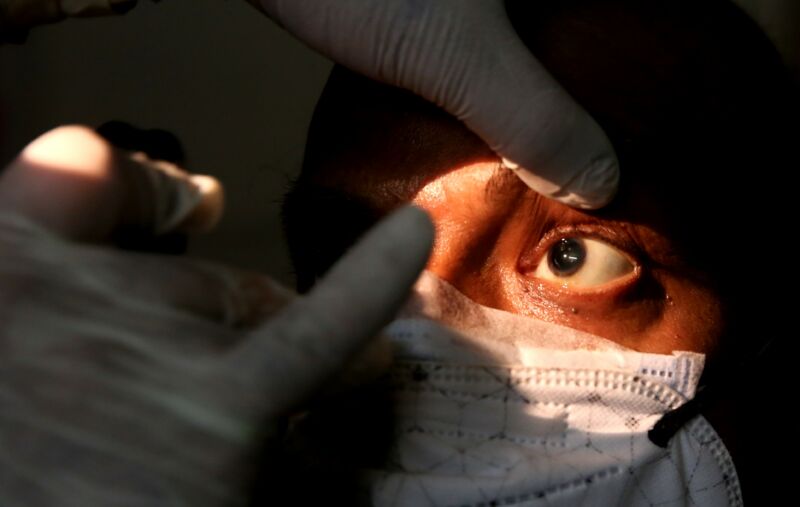
/ A suspected mucormycosis black fungus patient receives examination at a hospital in Bhopal, India, on May 29, 2021.
So-called “black fungus” infections are surging in India in the wake of a devastating wave of COVID-19. The rare but devastating infection can destroy the eyes and spread to the brain.
Cases now top 31,000, rising from an estimate of dozens to a few hundred cases just last month. Media reports have tallied over 2,100 deaths, but federal health authorities have not released an official death count.
Past medical reviews have estimated that the fungal infection—mucormycosis—has an overall fatality rate of around 50 percent. However, mortality rates vary by patients’ underlying condition and what part of the body the mucormycetes fungi invade. Infection can take hold in the gastrointestinal tract, skin breaks, lungs, and the blood.
In India, the fungi appear to be mainly taking root in the nose and sinuses, where they can spread to facial bones, eyes, and even the brain. Once an infection is established, it can quickly become aggressive and lead to tissue death. If it spreads to the eye, many patients end up permanently losing vision and, in some cases, need to have their eye entirely removed to keep the infection from spreading.
Mucormycetes are a ubiquitous group of molds, and they typically only strike immunocompromised patients, such as those with diabetes. The soil-lurking molds love acidic conditions, making patients with diabetic ketoacidosis—a complication in which the blood becomes acidic—particularly vulnerable.
Medical experts hypothesize that the current surge of mucormycosis in India is down to a confluence of factors related to the COVID-19 wave. Many of the cases are occurring in people who are recovering or have recently recovered from COVID-19. The combination of poor hygiene amid the health crisis, the country’s large number of people with diabetes—particularly uncontrolled diabetes—and an over-reliance on glucocorticoid steroids appear to be playing a role in the fungal epidemic. Steroid use can help treat COVID-19, but it can also tamp down immune responses and make people vulnerable to opportunistic infections, such as mucormycosis.
An expert in fungal infections referred to the situation as “triple whammy,” as Ars reported previously.
In recent days, media reports out of India have noted children having their eyes surgically removed because of fungal infections, local governments declaring epidemics, and black-market sales of treatments for mucormycosis.